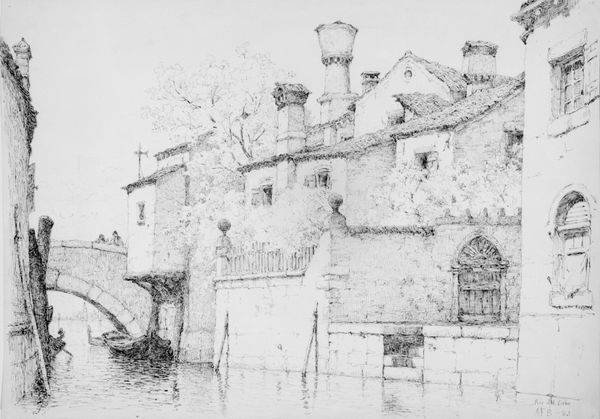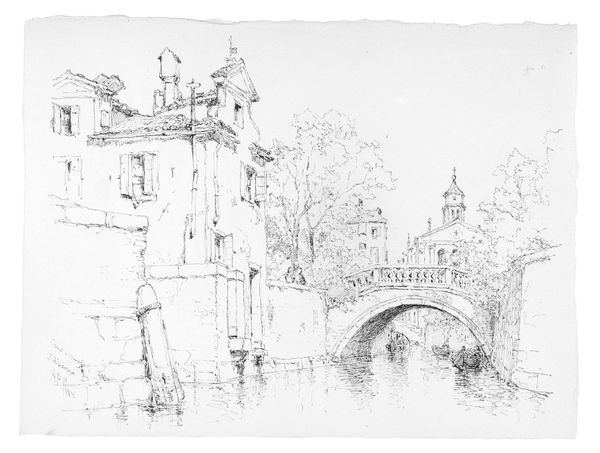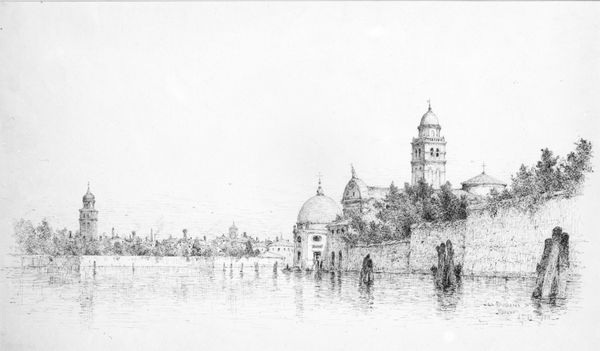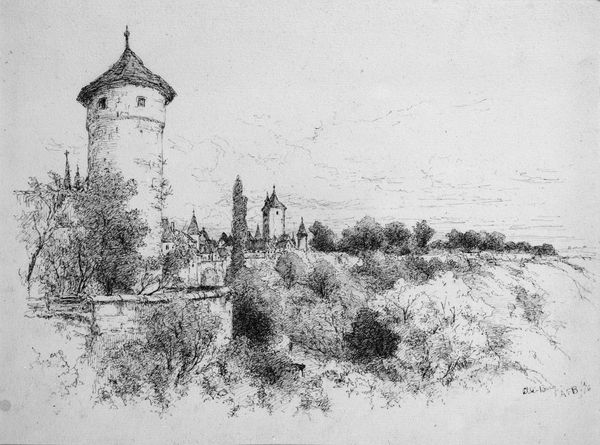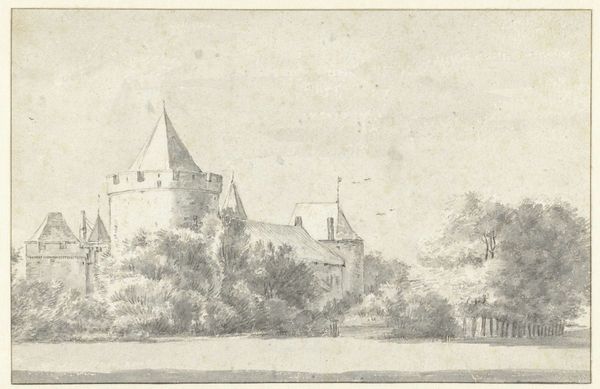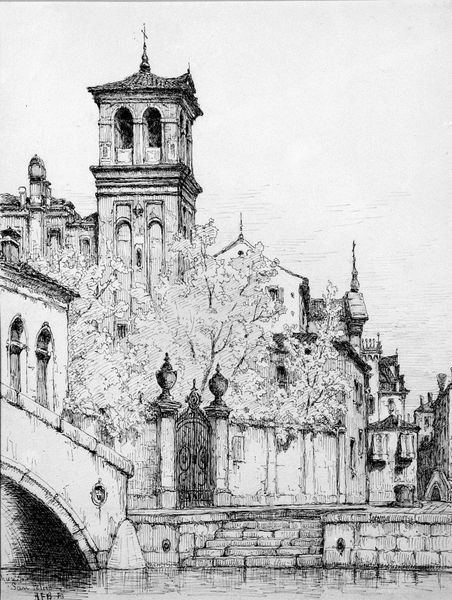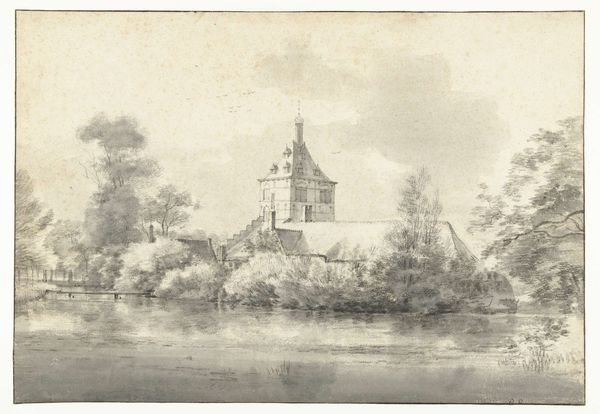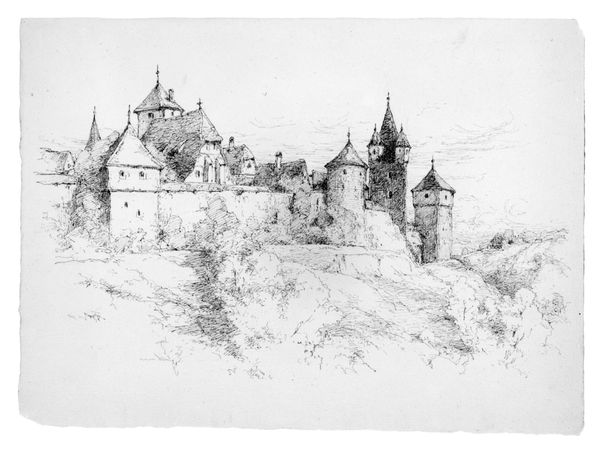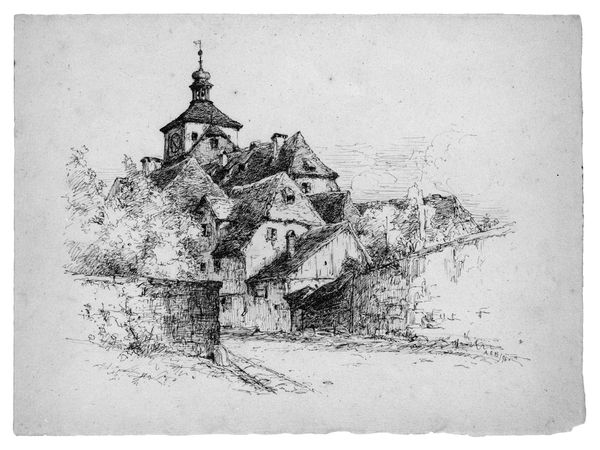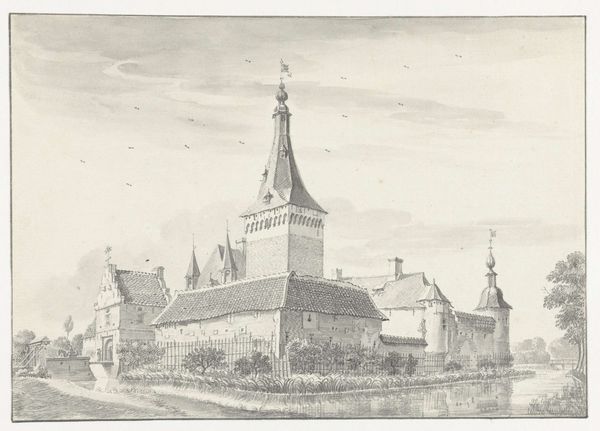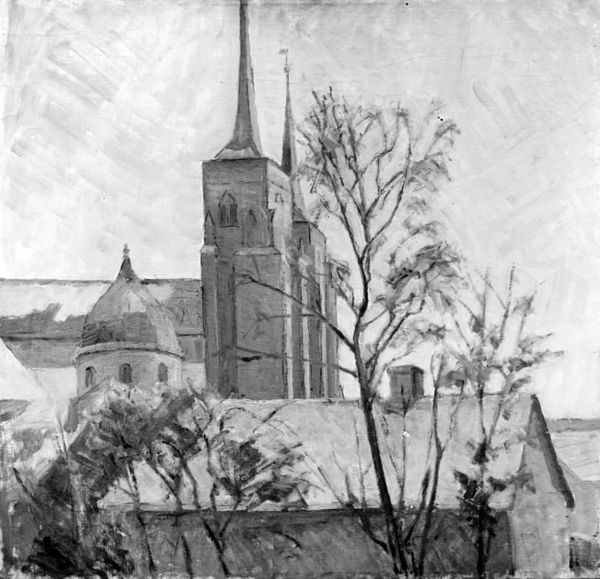
drawing, etching, paper, ink, pen, architecture
#
drawing
#
etching
#
landscape
#
etching
#
paper
#
ink
#
geometric
#
pen-ink sketch
#
pen
#
cityscape
#
italian-renaissance
#
architecture
Dimensions: 8 3/8 x 18 5/8 in. (21.3 x 47.3 cm)
Copyright: Public Domain
Editor: This is Andrew Fisher Bunner's "San Francesco, Venice," created in 1883, using ink on paper as an etching. The linear detail gives the impression of peering through a wrought-iron gate; what strikes me most is the delicate hand employed in its execution. How does the lens of material analysis inform your understanding of this cityscape? Curator: For me, it's less about delicacy, more about the democratization of art production that etching made possible. This wasn't a unique oil painting laboriously rendered for a wealthy patron, but an easily reproducible image accessible to a wider audience. The labor involved shifts from the artist's hand to the printing press, fundamentally altering the artwork's value and its reach. What kind of social commentary might such reproductions instigate, by granting viewers of different social strata visual access? Editor: That's an intriguing angle. I hadn't considered the implications of reproducibility on viewership. I was too caught up in the individual skill. Does that influence how we see Bunner’s choice of subject matter? Curator: Absolutely. Venice, even then, was a potent symbol of cultural heritage and, increasingly, of tourism. By choosing this subject, Bunner participates in a network of visual consumption. His etching, as a commodity, plays a role in constructing and reinforcing ideas about Venice as a desirable destination and valuable cultural asset. Are the materials used contributing in spreading certain themes, or do they hinder this process? Editor: It's fascinating how examining the materials and methods can reveal so much about the social and economic forces at play, almost stripping away the romantic veneer. Curator: Precisely! This allows us to examine the very means of its creation and distribution. Consider it: how many copies could be made, how easily could it be disseminated and acquired by a larger audience? Editor: I see what you mean. It shifts the focus from just the aesthetic to the entire system of art production and consumption. Curator: Exactly! Editor: Thanks, that's really opened my eyes. I am also reflecting upon the number of buildings created for religious purposes through a capitalist system. Curator: Indeed!
Comments
No comments
Be the first to comment and join the conversation on the ultimate creative platform.
